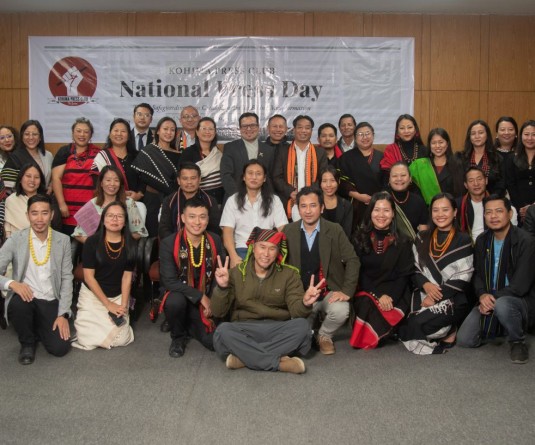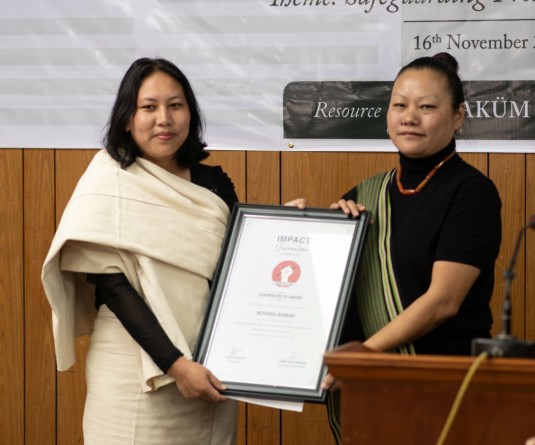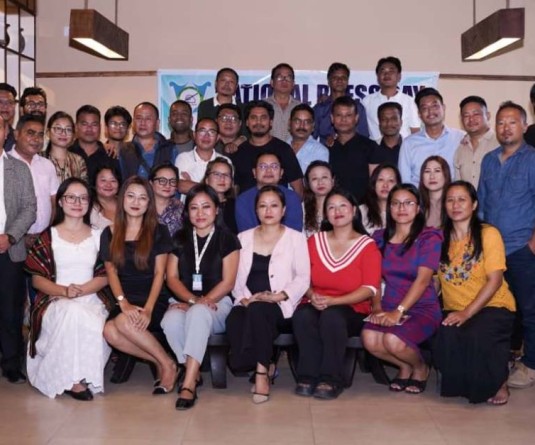
Categorised as a state with ‘Satisfactory Performance’
Morung Express News
Dimapur | November 8
Nagaland State was ranked 14 in the Gender Vulnerability Index (GVI) structured by NGO Plan India, a child rights organisation providing children, especially girls, with access to education, healthcare, protection and livelihood opportunities.
The index ranking Indian States on four key parameters-education, poverty, protection and health, was released last week.
The index followed a Lifecycle approach according to which the challenges faced by women are unique and continue throughout their life.
Goa occupied the top spot with a GVI of 0.656 on a scale of 0 to 1, while the last spot was occupied by Bihar (0.410). Three North East states – Mizoram, Sikkim and Manipur – were ranked 3rd, 4th and 5th respectively apart from Kerala at the second position. Arunachal Pradesh was ranked lowest among the NE states at 26.
Nagaland state, with an average GVI score of 0.564, was ranked 11th in terms of poverty, 8th in protection, 14th in education, 22nd in health, culminating to an average GVI ranking of 14 out of 30 states and categorised as ‘Satisfactory Performance.’
Vulnerablities & strong points
Under the education category, the report revealed that 33.3 percent of women in the state have 10 or more years of schooling. It added that about 54.5 percent of women in Nagaland are literate, compared to the national average of 7 out of ten women in India being literate.
However, though 99.9 percent of schools reported having a separate toilet for girls, only 40 percent reported that the toilets were in usable condition.
Under the poverty category of the GVI ranking, the report stated that 70.5 percent of women in Nagaland have a mobile phone that they themselves use. Additionally, 34.7 percent of women own land/property (alone or with other people); and 38.9 percent of women have a bank account that they themselves operate. The report also stressed on the fact that Nagaland state has not even one elected women representative.
The report further stated that in terms of health and survival, 13.9 percent of households have no access to toilet facilities and are defecating in the open. However, 72.6 percent of women reported that they have used hygienic methods of protection during their menstrual period. The report added that 80.3 percent of women are delivering in a medical institution.
As far as protection for women goes, the report informed that 13.3 percent of girls in the state were getting married before the legal age. Further 12.7 percent of women have ever experienced spousal violence. It meanwhile added that 100% of girls who are victims and reported the cases under Protection of Children from Sexual Offences (POSCO) Act knew their offenders.
Other statistics reported by the GVI included the state’s female literacy rate at 54.5 percent; a poverty ratio of 7:1; female infant mortality rate of 14; under five mortality rate of 37 and HIV prevalence (C) rate of 0.78 percent.
According to the Plan India, the report was an attempt to develop collective perspectives and generate a normative consensus on the status of girls and women in India, which could act as a tool to be used by policymakers, development practitioners, academicians, gender experts, NGOs among others.
The Index is the first step as part of “Plan for Every Child,” campaign to identify the vulnerabilities faced by girls and women in order to contribute to a developmental dialogue for gender sensitive solutions and gender transformation, it noted.
As a process, the report stated that since the GVI divulges the magnitude of the vulnerabilities at state and national level, it is imperative that regional priorities and variations in the social, economic and cultural constructs are taken into account.
“Hence it is important that girls and women who face the effect of vulnerabilities are able to understand and accept the issues related to them, so that the strategic approaches can be employed to deliver tangible solutions,” it added.






